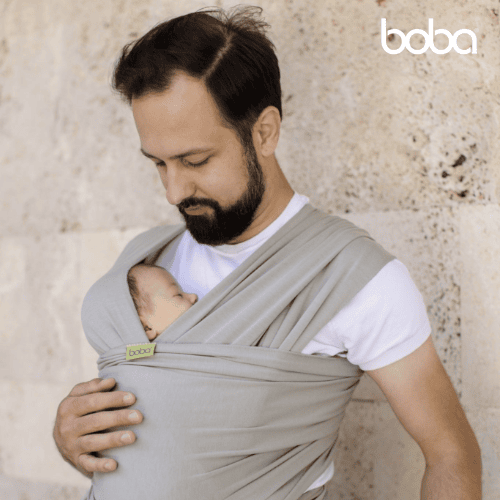7 Types of Baby Cries – How to Tell What Your Baby Needs
Have you figured out your baby’s cry language? Did you even know your baby had his very own language?
Usually by 3 weeks or so most parents have figured out the basic cues from their child. But with all babies, just as soon as you think you’ve figured them out, something changes. They go through a growth spurt, they get teeth, they go through a wonder week, they learn how to poop (lol).
I hope this guide will help out another Mom or Dad in the middle of the night when you just don’t know – is she scared? Is he Mad? Is she Hungry? I just don’t know! Here are 7 types of baby cries and full descriptions to help you figure it out.
1. Hungry
The very first cue you will have to tune into is the hunger cry. When you’re in doubt, at least in the early weeks, always assume it is hunger first. In my opinion this cue is one of the easier ones to figure out if you’re paying attention.
Early signs of hunger
Early signs of hunger don’t involve crying at all. They can include opening the mouth, sucking on fingers, toys, clothing, etc.
Intermediate signs of hunger
After the early signs babies will quickly progress to intermediate signs, including rooting and and squirming. Most babies will try to wiggle themselves into nursing position. Shortly after this they will start fussing.
Late signs of hunger
By the time your baby starts crying they have already been showing signs of hunger for a while. Late signs of hunger include moving the head side to side, crying, furiously rooting or sucking. Some babies will grab or punch the breast to try to stimulate a let-down.
Remember that after the first few weeks sucking may no longer be a reliable indicator. As they discover their hands they will begin sucking on them continuously.
2. Tired
Again it is important to catch this one before your baby is overtired, as it becomes not only more difficult to tell the difference, but also considerably more difficult to get her to fall asleep.
Early signs of fatigue
Early signs include avoiding eye contact, turning away from a stimulus, yawning, and rubbing their face. (Remember that newborn babies and small babies cannot reach their faces so you will miss this sign in that 0-3 month age range.)
Late signs of fatigue
Crying is a late sign of fatigue. The “I’m tired” cry often has a cough-like sound in it. It may sound a bit like this: “wah, wah, WAH – cough – WAH – cough – WAAAAAAH!” Late signs also include furiously rubbing the face/eyes/noise.
Wondering if your baby is tired? The biggest predictor of fatigue is the length of time they have been awake. Here is a handy chart for you:
| Age of baby | Max length of “awake” time (from wakeup to beginning of next nap) |
| 0-1 month | 5-40 minutes, at the most. (Remember that newborns are characteristically “sleepy” and may only have a few minutes of active:alert time before sleeping again) |
| 1-2 months | 40-60 minutes, or awake the duration of their last nap. |
| 2-3 months | 60-80 minutes or duration of their last nap |
| 3-4 months | 60-90 minutes or duration of their last nap |
| 4-6 months | Duration of last nap, up to 1 hour 45 minutes max |
| 6-8 months | Up to 2.5 hours |
| 8-10 months | 2-3.5 hours |
| 10-12 months | 2.5-4 hours (often longer awake times in the morning and shorter in the afternoon) |
3. Discomfort
Usually the “I’m uncomfortable” cry also includes squirming, fussing or arching. Discomfort cry typically doesn’t improve much when you’re holding your baby. Try a diaper change first, then clothing change. If no improvement look for a diaper rash, coat her bum thoroughly with diaper cream to be on the safe side. I like Weleda Calendula Diaper Care, that’s an affiliate link 🙂
If there is still no improvement you can look for rashes elsewhere or tags on clothing that may be irritating her skin. Then consider changing diaper brands or switching from disposable to cloth or visa versa. If you’ve been using cloth diapers for a while now may be a good time to strip them (this gets rid of the built-up ammonia). Also consider changing soaps or washing only 1-2 times per week to prevent skin irritation.
4. Pooping
Bodily functions can be frustrating for little people, especially when they don’t have the benefit of gravity working in their favor. The poop cry is usually accompanied by a red face and sometimes grunting. Some babies poop easier when they are lying on their belly or held upright in the knees to chest position. Pooping can be especially frustrating for newborns who don’t quite understand which muscles to push yet. Most babies will figure that part out between 3-6 weeks of age.
5. Mad
This one is often specific from baby to baby. It is usually VERY loud, sometimes with a grunt or a grimace. The eyes are typically half open (but sometimes closed if the baby is mad and tired at the same time). Mad cry is most well known when trying to sleep-train (or sleep “coach”!) your baby. See below, it is very, very important to learn the difference between Mad cry and Scared cry before attempting sleep training.
6. Pain
Pain cry is usually very high pitched with a harsh quality. This is the type of cry that gives you goosebumps and waves of adrenaline. It is virtually impossible to stay relaxed when you hear a baby’s pain cry. According to these researchers babies who are in pain typically close their eyes, which is the clue-in to whether a baby is angry, scared or in pain.
Look for anything that would cause pain. Arching usually means gas or reflux. Look for hairs that may be wrapped around a finger, toe, or penis for boys. Inspect the skin carefully and look for lacerations (cuts). A baby who is drawing his legs to his chest and has red, mucousy poops may have intussusception and should be taken to the hospital. A baby with a bulging or shrunken fontanelle may have a serious illness and should also be evaluated immediately by a physician. Screaming after laying the baby down is sometimes an early sign of ear infection. Babies who scream in pain and then become lethargic or withdrawn should also be checked out quickly.
7. Scared
Scared cry can be like pain, but often the eyes are wide open. It is a loud, harsh, sudden cry. Context is everything for this one: was there a loud noise? New person holding her? Sudden Bright lights?
Why is it important to differentiate at scared cry? If you are planning on any type of sleep training it is incredibly important to learn the difference between your baby’s Scared, Mad and Pain cries. Sleep training often involves some type of crying (though I strongly believe that babies should “fuss it out” and never “cry it out”). A baby who is scared or in pain should never be left alone or forced to cry it out. First, because it is simply cruel, but also because a scared or hurting baby will not learn to sleep on his own!
I hope this list was helpful to you! Good luck on your parenting journey, I promise you’ll learn what your little one needs, but sometimes it just takes time!


Carlyn Timaitre
April 4, 2023 at 5:29 pmMy 2 months old scream cries, while drinking breast he will stop and start crying with screams to the back of his lungs, then right after calms down to his lowest point like it was never him screaming to start with. Am worried as a second time mom, even scared at times, help?
Erika Krumbeck, ND
April 4, 2023 at 8:13 pmHi Carlyn,
You may want to talk with his pediatrician about colic or reflux. Refluxy babies often scream while nursing, arching their backs. Babies with reflux also like to be held straight vertically after feeds.
Colicky babies are very gassy, and get better after a bowel movement.
Hope this helps!
– Dr. K
Pingback: 7 tipos de choros do bebê - descubra seu significado - Intercasa Blog de Decoração
April 6, 2018 at 3:22 pm